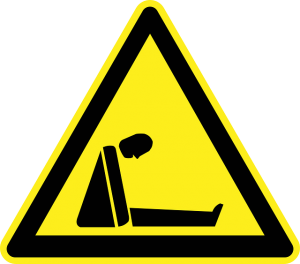Last month’s blog focused on how to get funding for a new business. If you’re unemployed, or looking to switch things up a bit in your career, you might be interested in finding out how to become self-employed. There’s no sense in applying for government funding if you don’t know what you want to have a business in. Being your own boss has its perks, but you’ll lose interest quickly if you don’t have a solid goal and business plan in mind.
So, before you try to finance your new business, it’s imperative to consider the specifics of it. This is where a business plan comes in. A business plan is essentially a document that looks ahead and determines what your business hopes to achieve. In the life of a self-employed person, carpe diem doesn’t really come into it. You need to constantly be thinking ahead so your business can remain competitive. Hence, a written plan of what you intend to do is instrumental to your company’s success.
Not only this, but a detailed business plan will help you gain investors. Yes, I’ve talked about how the government helps unemployed people start a business, but the money they provide will not cover all the costs. This is especially true if your business requires expensive equipment or building space. You might be able to stretch the government funding if your ‘business’ is as a freelance writer, but what about if you want to open up a bricks and mortar bakery or clothing shop? A couple of hundred quid a month will not buy baking equipment or clothing stock. Thus, most aspiring enterpreneurs need a solid business plan so that they have a higher possibility of getting investors to pump funds into their new company.
So, now that you can see how important a business plan is, you need to know how to actually put one together. What do you include? How long should it be? How can you predict the future in terms of inputting the number of employees or profit estimates? There are many questions like these that can overwhelm aspiring enterpreneurs. So, without further ado, here are some tips on how to create a business plan:
Traditional Versus Lean
First, should you write a traditional or a lean business plan? A lean plan is like the outline of a novel, while a traditional one is more like the novel itself. It should be noted that most investors request the longer kind, so it seems obvious that the traditional one is the way to go. A plan of this kind can be dozens of pages long, and can go into extreme detail. For example, if you want to open a restaurant, your lean plan would outline the general direction of the menu, but the traditional one would price thhe cutlery and the tableware.
A lean plan still has its uses though. If you’ve only just decided you want to start a business, drafting out a lean plan will serve to inspire and motivate you. Once you’ve digested the rough outline of your goals, here are the sections that you need to address in your traditional business plan:
Summary
This section should say what your company is and why it will be successful. Remember, a business plan is instrumental in obtaining investment. It’s like a Curriculum Vitae in the sense that the investors are like your prospective employers. You should also include some financial information in this part, and briefly show how your company intends to make profit. You will never get financing unless you can convince investors that you can turn a profit, so make this part as thorough and logical as you can.
Company Description
This is where you describe your company in detail. What services does your company provide? Provide some examples of consumers or organizations that will benefit from what your company does. What makes your business different?
Awareness of the Market
You need to show investors that you have looked at the businesses in your locale or region and can offer something competitive to consumers. This isn’t as easy as it sounds. It isn’t just about inserting something that isn’t there, it’s about inserting something that people in that area will actually buy or use. For example, if you live in a seaside town and there are five chip shops, it may initially seem like a sushi bar will make a real splash. However, if you do your research correctly and find out the tastes of the local consumers, you might see that there isn’t enough of a young, trendy crowd to eat sushi. Sushi bars are kind of like Starbucks in a way: you won’t find your granny salivating for either.
Company Structure
This bit is like the mathematical bit, really. First, you want to say how many people you employ and why. Or perhaps it’s small enough to be run solely by you. Then, you want to say what type of business it is in terms of tax brackets and all that annoying stuff. You can do this by simply conducting some online research to find out what type of company it is.
If you are hiring additional staff, you should include their expertise. Investors do not want to invest money into a company that hires deadweight, as this will affect their profit margins. What investors want to seen is a well-developed idea that looks like an efficiently run business.
Funding Requirements
This is the bit where you outline how much money you’ll need, and why. The more research you do for this part, the better. It is much more convincing to an investor when they see detailed price plans for equipment as opposed to estimated prices. It is common for new businesses to struggle with profit margins for the first couple of years, so make sure you include money to cover bills until your revenue increases.
Financial Projections
This is where you predict how much money your company will make. This is one of the parts that an investor will be especially interested in. It’s important to paint a realistic portrait of the future, not just conjure up impressive figures to try to get investors. The more graphs, research and scholarship you can find that are relevant to your business, the better.
Other
You can add other sections to your traditional business plan. The main ones are highlighted above, but you may also want to outline how you plan to advertize your new business (known as a ‘marketing strategy’), go into details about the product you’re selling (the fine print like the manufacturing process or shelf life of the product), or add supporting documents to help sell your business idea more persuasively. Overall, you want to compile a neat, legible document that uses plain language to convey the ideas outlined above. Dog-eared pages or tea stains scream ‘eccentric’, and a jumble or irrelevant documents won’t help your case, so make sure the pages are clean and well-organized.
Now that you know how to create a business plan, it’s time to start brain-storming!
PS Type it out. This always looks neater.
References
An Introduction to Business Plans
How to write a Business Plan (Like a Pro)
by Gillian Rixey
(Gillian is a PhD qualified freelance writer and scholar born in Ireland but currently residing in the United States.)

















































